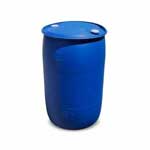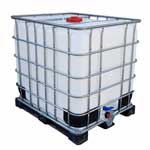
Glutaraldehyde
CAS No.:
111-30-8
Molecular Formula:
C5H8O2
Molecular Weight:
100.12
Structure Formula:
Properties:
| Item | Index |
|---|---|
| Density, g/cm3 | 1.09-1.124 |
| Melting Point, °C | -5.8 |
| Boiling Point, °C | 101 |
| Refractive Index | 1.373 |
| Water solubility | miscible |
Glutaraldehyde is a colorless or yellowish clear and bright liquid with a slightly irritating smell and can be dissolved in organic dissolvents such as water, ether, and ethanol.
In a water solution, Glutaraldehyde doesn’t exist much in a free state; instead, Glutaraldehyde makes an appearance hydrate with different forms. And most of them are hydrates with an annular structure.
Glutaraldehyde is reactive in properties and liable to polymerize and oxidize, which will react with compounds containing active oxygen and nitrogen. The product’s reaction with protein is mainly carried out between the former’s carbonyl group and the latter’s amino group. The product is one of the best protein cross-linking agents among the known aldehydes.
Glutaraldehyde has a small influence on the activity of an enzyme, and most of the enzymes can be fixed under controlled conditions to cross-link without losing their activity. Contributing to its outstanding characteristics, the product has drawn special concern from people and has been put to broad application.
Specifications:
| Item | Index | |
|---|---|---|
| Appearance | Colorless | Yellowish oily transparent liquid, with irritating odor |
| Assay, % | 25 Min. | 50 Min. |
| pH value | 3-5 | |
| Methanol, % | 6-7 | |
| Colour (Platinum-Cobalt), Hazen | 80 | |
Uses:
Glutaraldehyde is a bactericide, disinfector, and tanning agent widely used in petroleum development, leather treatment, food, plastics, coatings, etc.
Packing and Storage:
Glutaraldehyde is normally packed in 200L Drum, 1000L IBC Tote, but can also be used as required.

Glutaraldehyde should be stored in a room shady and dry place.
Synonyms:
Glutaraldehyde, Alias 1,5-Glutaraldehyde, Pentanedial, Glutaric dialdehyde.






